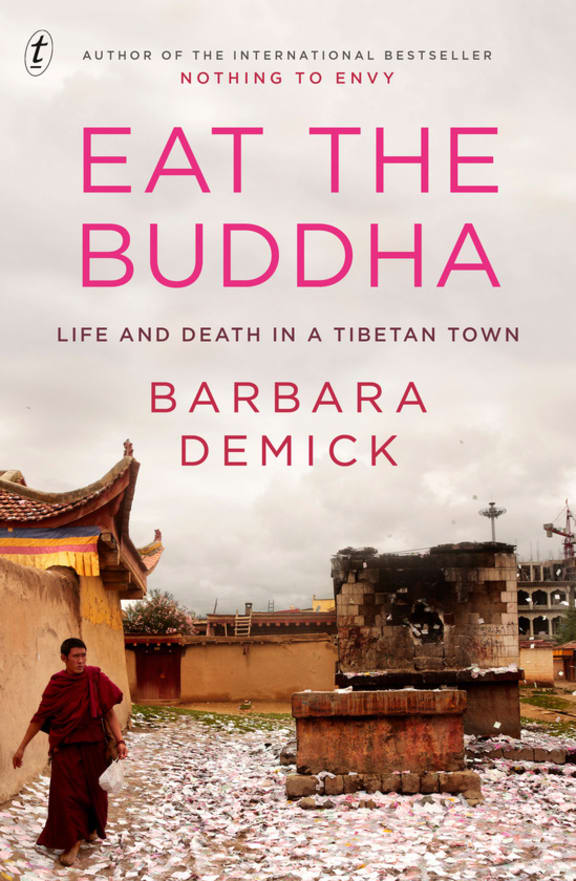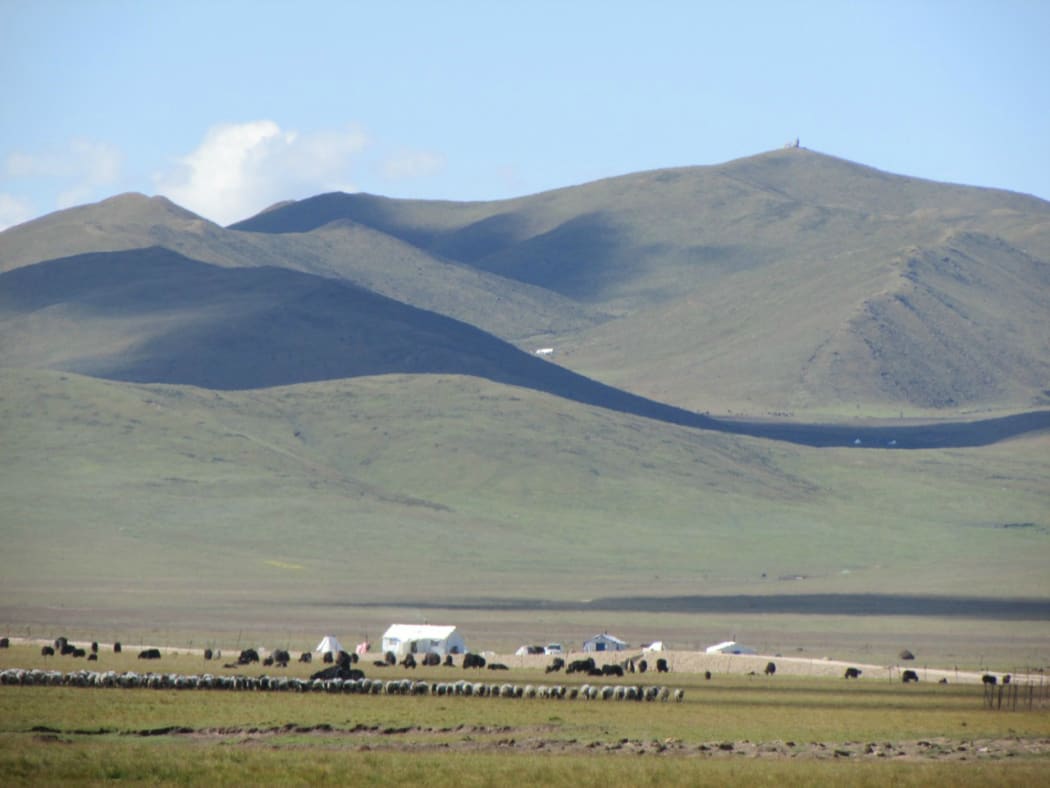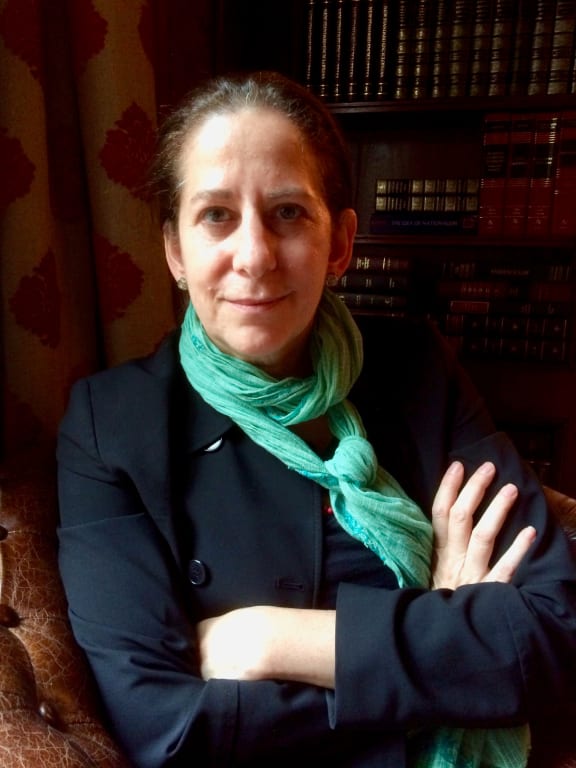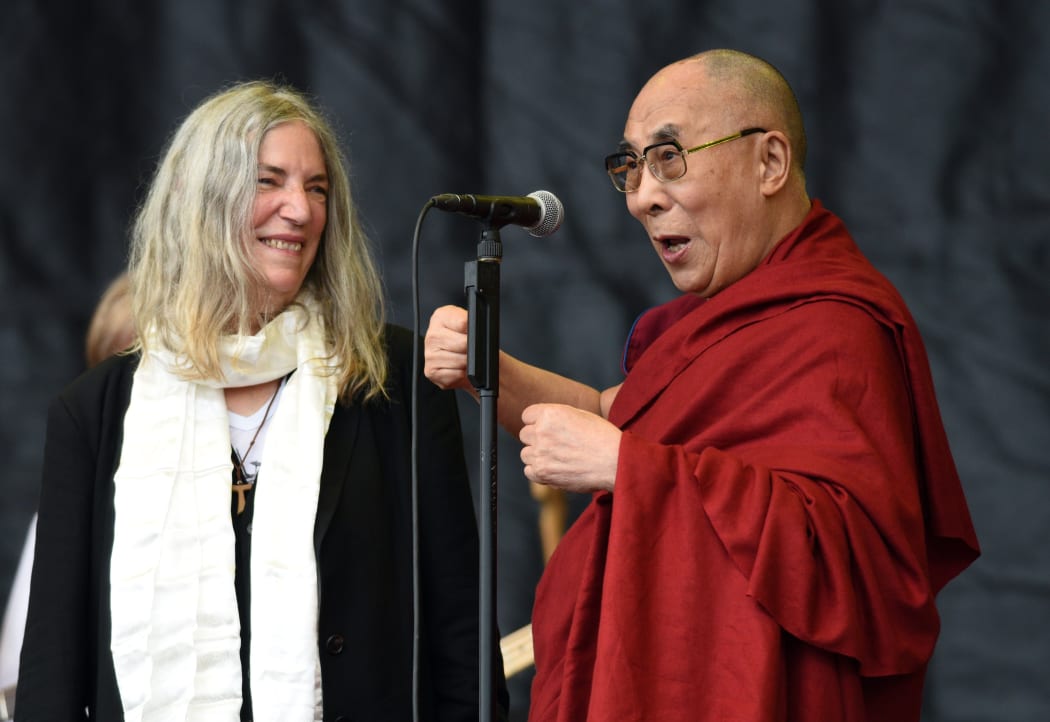Content warning: This story discusses graphic details of death and self harm.
On March 16, 2011 Rigzin Phuntsog, a usually smiling, young Tibetan Buddhist monk set himself alight in the Chinese town of Ngaba in protest at what he saw as repression by the Chinese. He wasn’t the first; two years before another young monk Lobsang Tashi set himself alight but he had survived, an invalid kept in a Chinese hospital.

Eat the Buddha is about life and death in a majority Tibetan town in China Photo: Supplied
By the time Barbara Demick finished her account in 2019, 156 Tibetans had killed themselves, a third in the one town of Ngaba. The town in China’s Sichuan province, had become the unofficial world capital of self-immolation.
Demick, a foreign correspondent and later Beijing bureau chief for the Los Angeles Times and award-winning writer, spent years interviewing people about what drove people to do such an unthinkable act. Eat the Buddha: Life and Death in a Tibetan Town, follows her other award-winning micro-histories – life on a Sarajevo street during the Bosnian War or the lives of North Korean escapees. This may be her best.
Self-immolation is confronting. For Tibetan monks it stabs at the heart of Chinese arguments that Tibetans are happy, freed from centuries of a medieval theocracy. No, say these monks, we are so unhappy, so distraught that we will endure the pain of setting ourselves alight to die.
To show how it came to this, Demick peels away layers of resentments and misunderstandings between Tibetans and Chinese in Ngaba. The title comes from the Long March in 1935-36 when Mao’s starving Red Army fled across the Tibetan plateau and the Chinese soldiers ate the votive Buddhas made of barley flour and butter in the monasteries. The Tibetans put up fierce resistance, but monasteries were desecrated.
In 1950, the People's Liberation Army (PLA) moved into Tibet and other Tibetan areas of China. In Ngaba and surrounding areas of Sichuan, monasteries were requisitioned or demolished, statues smashed.
Writes Demick: “it is impossible to fathom current Tibetan attitudes towards the Chinese government without grasping the enormity of what befell them in the 1950s and early 1960s. Tibetans often speak about “when the Chinese invaded” - only to be chastised by Chinese.....”

The Tibetan Plateau. Photo: Supplied
“The estimated death toll of 300,000 Tibetans during this period is greater than the massacre in Nanjing by Japanese occupying troops, for which the Chinese government insisted on repeated apologies.”
The death toll through this period and the Great Leap Forward is disputed but possibly huge.
Much of the story is told through the eyes of Princess Gonpo Tso, whose father was the last king of the area. He was ahead of his time; he believed in the education of girls and was said to make his own bed so the servants didn’t need to.
The army seized the Ngaba palace and sent the family into exile. During the Cultural Revolution, the family were labelled feudal oppressors and endured struggle sessions (a form of public humiliation and torture used by the Chinese Communist Party). Gonpo’s mother is believed to have thrown herself into a river on her return. Her father died by suicide rather than live without her.
Gonpo was sent to labour in the fields in Xinjiang.
One of Demick’s strengths is showing how the crosscurrents of Chinese politics could produce unexpected results among Tibetans. While Gonpo was undergoing hard labour, some of her people embraced the Red Guards. They hated the farming collectives, the suppression of religion, the lack of freedoms. They took Mao at his word to rise up. They were quashed.

Photo: Supplied
The tale of the changing circumstances in Ngaba is deftly told, even if it makes for some parallels for New Zealanders dealing with a colonial past.
In the 1980s, the dusty market town of Ngaba hit a mini boom. The Tibetan caterpillar fungus had become popular as a Chinese medicine. Han Chinese followed the government urgings to “Develop the West” and moved into town. Tibetans saw it is a land grab. Land was confiscated for housing developments. Tibetans protested the loss. They resented the Han settlers who always seemed to get business licenses, they never did. Schools taught Chinese history and Chinese language. In one scene, young people brought up on Chinese history gawp at a film of The Long March being made in town with a famous Chinese actor as Mao, while their grandparents fume at the memory of the looting of monasteries.
It came to a head around the 2008 Beijing Olympics. Protests erupted; the authorities cracked down. There were melee and riots, at the Chinese companies in town, at mining, the condescension, fights over language. The army was sent in, checkpoints put up, monasteries locked down again, cameras installed in public places.
When a young girl is killed by a stray bullet, Tibetan students refused to take part in any Chinese celebrations or speak the language.
And then the burnings began.
But for a grim story, Eat the Buddha has a light touch. There is a lot of love here. Princess Gonpo falls for a fellow student on her hard labour detail, a Han Chinese. They raise a family and have a good life. When she realises she must return to Ngaba to be with her people, even if it means banishment and exile, he raises the family. They see each other once or twice a year. “Mostly what we do is cry.”
There are others. The tough Tibetan kid who falls in love with a Chinese girl and they open a business. The grandmother who loves raising her grandchildren so they can go to Kitri monastery, only to see them caught up in riots.
Telling the story of ordinary people to explain the currents of history has become a familiar technique. It has produced classics like Hiroshima by John Hersey, who read Thornton Wilder’s The Bridge of San Luis Rey about a handful of missionaries who perish on a rope bridge on the way to Japan, and decided to focus instead on six stories of people and the bomb, or William Dalrymple’s Nine Lives; In search of the sacred in Modern India. Like these landmarks, Demick’s story is extraordinary, her characters well-sketched.
It is also backlit by her struggles to get inside the town to meet Tibetans. Her stories feel at their best in the town with its houses with their hidden pictures of the Dalai Lama, or the bars and karaoke places. The pace of the book slackens lightly when Demick heads to Dharamsala in India to interview exiles from Ngaba.
She is good at finding the joy as well as the anger in her characters’ stories. She must have an extraordinary interviewing technique because people are so open about their feelings. Dongtuk, for instance, is a trainee monk who admits to being jealous when Phuntsog achieves fame through his self-immolation. Or the student, Dechen, who loves Chinese movies and has a crush on the young Chinese soldiers in uniform on the barricades, only to be caught up in the riots. But while this is a story about Tibetans in China, I did start to want to hear the voices of Han Chinese about their experiences in Ngaba as well.

Tibetan spiritual leader the Dalai Lama appeared on the same stage with US punk poet Patti Smith. Photo: AFP
In the end, the exiles in India fear time is running out for Ngaba, Tibet and its culture.
“The Tibetans are not some exotic isolated tribe trying to preserve an ancient civilisation against the advance of modernity,” concludes Demick. “They want infrastructure, they want technology, they want higher education. But they also want to keep their language and culture and their freedom of religion.”
Princess Gonpo tells Demick she can barely speak about the self-immolations. Some of them would have been the children or grandchildren of her father’s subjects. “I can’t believe we are losing these precious young lives, one after another,” she says.
Eat the Buddha: Life and Death in a Tibetan Town by Barbara Demick
If you want to talk to someone, this is where you can get help.
Where to get help:
Need to Talk? Free call or text 1737 any time to speak to a trained counsellor, for any reason.
Lifeline: 0800 543 354 or text HELP to 4357
Suicide Crisis Helpline: 0508 828 865 / 0508 TAUTOKO (24/7). This is a service for people who may be thinking about suicide, or those who are concerned about family or friends.
Depression Helpline: 0800 111 757 (24/7) or text 4202
Samaritans: 0800 726 666 (24/7)
Youthline: 0800 376 633 (24/7) or free text 234 (8am-12am), or email talk@youthline.co.nz
What's Up: (online chat) (3pm-10pm) or 0800 WHATSUP / 0800 9428 787 helpline (12pm-10pm weekdays, 3pm-11pm weekends)
Kidsline (ages 5-18): 0800 543 754 (24/7)
Rural Support Trust Helpline 0800 787 254
Healthline: 0800 611 116
Rainbow Youth (09) 376 4155
If it is an emergency and you feel like you or someone else is at risk, call 111.

